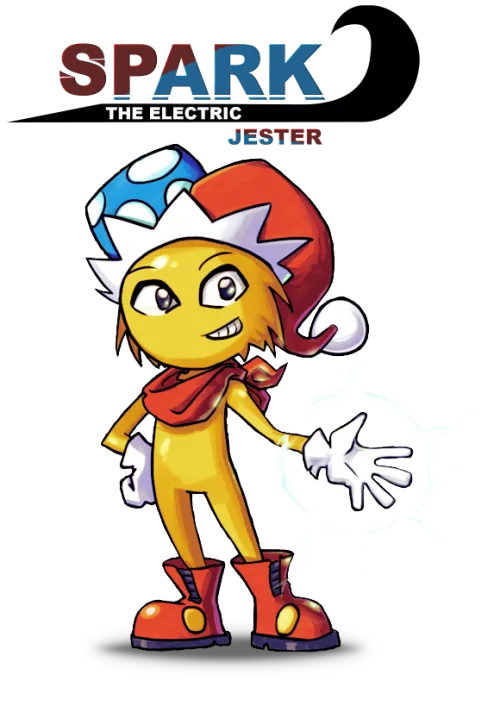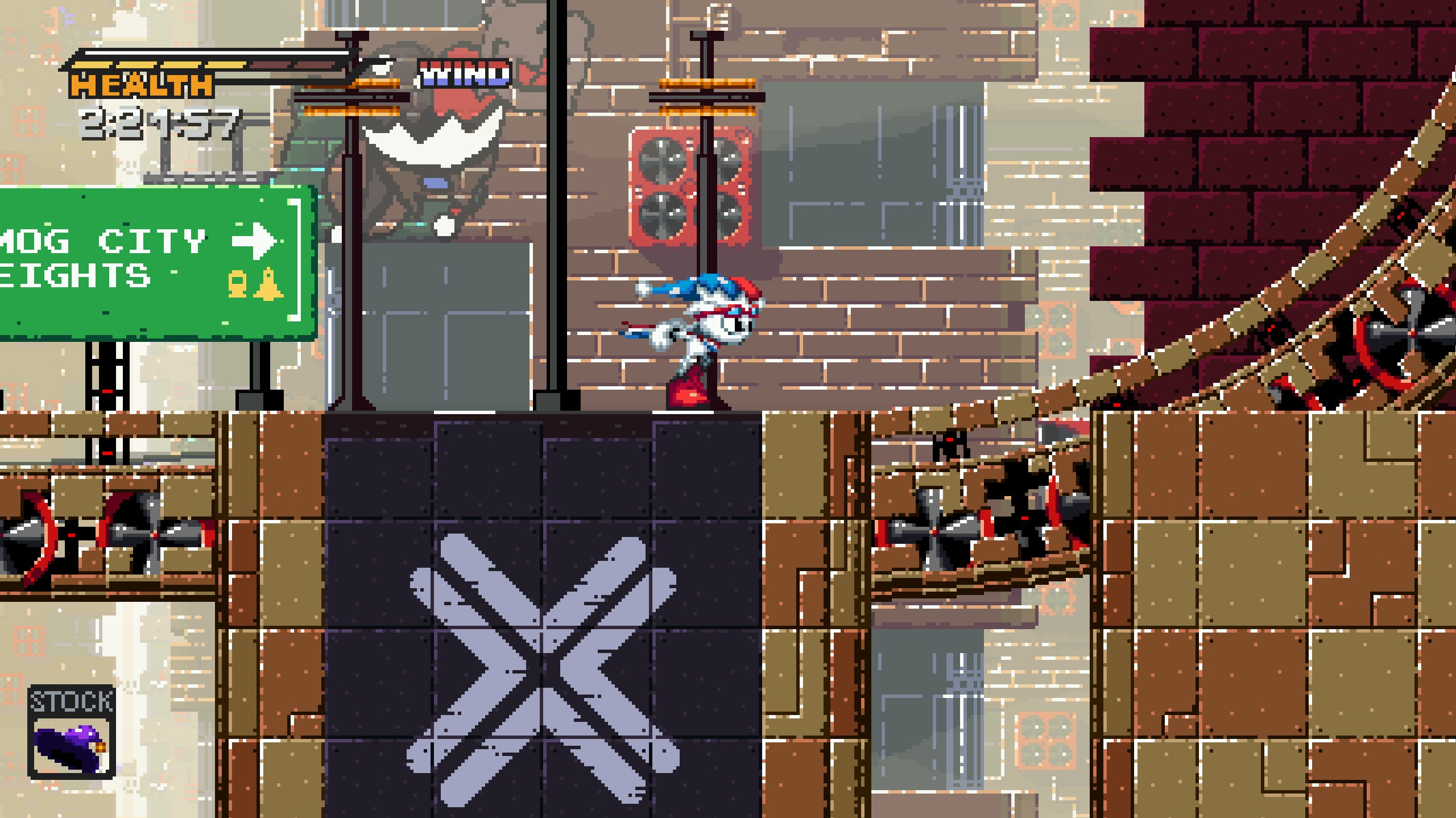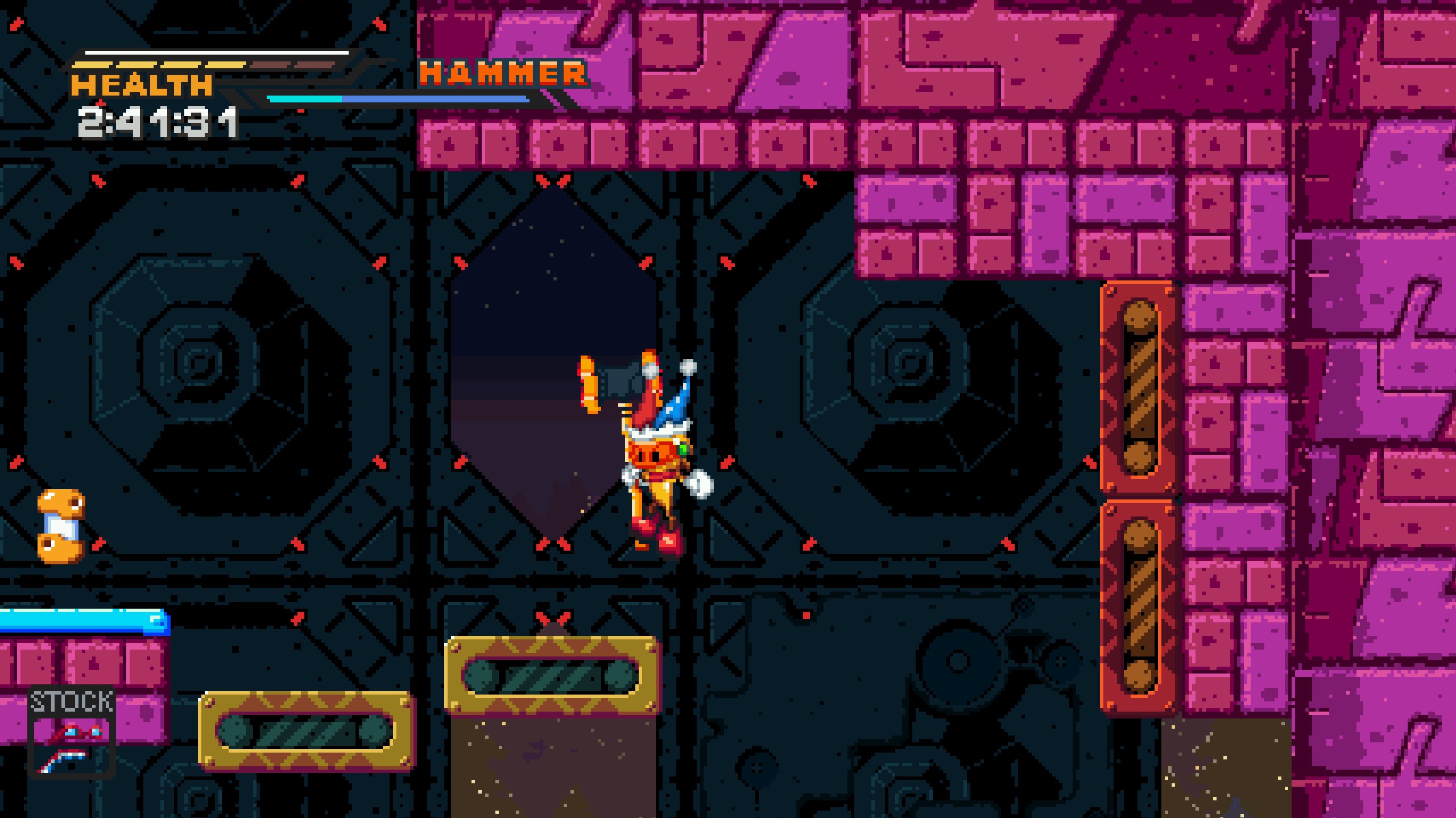Search
[{{{type}}}] {{{reason}}}
{{/data.error.root_cause}}{{{_source.title}}} {{#_source.showPrice}} {{{_source.displayPrice}}} {{/_source.showPrice}}
{{#_source.showLink}} {{/_source.showLink}} {{#_source.showDate}}{{{_source.displayDate}}}
{{/_source.showDate}}{{{_source.description}}}
{{#_source.additionalInfo}}{{#_source.additionalFields}} {{#title}} {{{label}}}: {{{title}}} {{/title}} {{/_source.additionalFields}}
{{/_source.additionalInfo}}- Details
- Category: Computer
- By Cinque Pierre
- Hits: 1579
Spark the Electric Jester (PC)

Spark the Electric Jester
Developed By: Feperd Games
Published By: Feperd Games
Released: April 10, 2017
Available: Windows
Genre: Action; Platformer
ESRB Rating: Not rated
Number of Players: Single player
Price: $7.99
Sonic fan games are plentiful as Sega are some of the few developers that don’t mind if the fans show their passion through interactive media (as long as they’re not trying to make a profit off of it). One of the more well-known and positively received fangames back in the 2010s were Sonic Before the Sequel and Sonic After the Sequel. So why am I talking about Sonic the Hedgehog when I should be talking about this Spark the Electric Jester guy? That’s because the sole developer Felipe Ribeiro Daneluz of Feperd Games created all the games that I mentioned.
Spark the Electric Jester is one part Sonic, other parts Kirby, a little bit of Dragon Ball, and some inspiration from Freedom Planet. Like many small indie games, Spark the Electric Jester is a hodgepodge of many things the developer loves and wanted to see in one game. Spark himself has a rather interesting backstory. He is part of an alien species called Formies. He pursued an undergraduate degree in electrical engineering and made a special jester hat that allows him to manipulate electricity in his spare time. He ended up getting a job as a robotics repair mechanic and held that for a year until he got replaced by a robot. He then took his jester hat and became a street performer gaining the attention of a circus and started working for them—shortly getting replaced by another robot who looks suspiciously like him. After witnessing rogue robots attack the city, he then heads on a quest to find out why.
The gameplay of Spark mainly takes inspiration from the 2D Sonic era, with fast-paced movement and high-speed sections. The levels contain all the loops, springs, and branching pathways that the subgenre is known for. Spark’s design is very simplistic with him being a yellow-featureless humanoid, but that leads to his other inspiration. Similar to the Kirby series, Spark can access a variety of powers through jester hats. His default is electricity, but he can also gain access to other elements such as fire and ice, or weapons such as swords and hammers. He can have one active power and one reserve power at any time. Switching powers is instant with a press of a button, so you’re encouraged to have complementing powers that cover each other’s weaknesses.

Strong Points: Great soundtrack; solid level design; fluid controls
Weak Points: Low resolution; common frame drops; way too many bosses
Moral Warnings: Violence against robots; mild language such as “twat” and “bad*ss”
Combat is different from both Sonic and Kirby. Spark has a dash ability that can also act as a parry to bypass damage from enemies if timed correctly. He also has a standard three combo attack and can use other attacks depending on the direction inputted or the ability on hand. Most enemies take one to three hits to defeat so combat tends to be pretty quick. Usually halfway and at the end of a stage are bosses that Spark fights. If Spark successfully attacks an enemy constantly, a bar below his health will fill, and when it is full he can access additional higher-damaging abilities. These will happen most often during the boss fights where they have significantly more health to whittle down. Boss fights both shows off the highlights and flaws of the combat system. Considering how there are typically at least two bosses on each stage (with 16 total stages), you’re gonna be fighting at least 32 bosses and I’ll just say that the combat, nor AI, are deep enough to warrant such a number.
The visuals of Spark the Electric Jester use 2D sprites. The background sprites and most of the character sprites are good for such a low-budget project. However, the resolution is limited and any “resolution” beyond that simply stretches the pixels to fit the screen. On high-resolution screens (above 1440p), the sprites will look fairly blurry, especially during moments of high speed. The design of the world is very coherent as many levels lead into each other and you can see subsequent and preceding levels in the background—as well as an ever-looming planet in the background. There are some cutscenes here and there that switch to a 2D animated style that also has a pixelated look.
Like the series that inspired Spark, the music of the game is very good. Many of the themes are high-beat and energetic, fusing both modern sounders with retro sounds most reminiscent of the Sega Genesis/Mega Drive. I found nearly every stage’s theme to be memorable. Some themes even have a chance to slow down. There’s a good amount of variety with the tracks. Sound effects are good, with distinct audio queues. Dangerous enemy attacks tend to have a notable distorted beep as a warning before the attack is used.

Higher is better
(10/10 is perfect)
Game Score - 78%
Gameplay 15/20
Graphics 6/10
Sound 9/10
Stability 4/5
Controls 5/5
Morality Score - 87%
Violence 6.5/10
Language 8/10
Sexual Content 10/10
Occult/Supernatural 9/10
Cultural/Moral/Ethical 10/10
Once you beat the game as Spark, you unlock the ability to play as Fark, the robot that looks very similar to Spark. Fark plays differently from Spark in that he has access to more combos, a block, and a natural double jump, but lacks the ability to use jester hats and has half the amount of health (going from six to three). Fark’s story has some small differences such as adding additional bosses to the already bloated boss roster. I personally didn’t like playing Fark as much as I did Spark because Fark lacks a lot of the variety that Spark has access to, and his playthrough is just as long as Spark's. Like the extra modes in Kirby games that let you play as Metaknight or King Dedede, Fark’s mode is just like that, but the former two shortened the runtime by cutting stages. Fark does end up being more aggressive in playstyle so there is fun to be had.
Spark the Electric Jester isn’t the best running game as there are some dips in frames outside of the intentional ones. It can get pretty bad during some of Fark’s boss fights with all the additional effects happening with his abilities and in the background. Other than that, it doesn’t crash or anything.
All the violence committed is against robots. Every enemy Spark and Fark fight is robotic in nature. There is some language with one of the bosses calling one of his allies a “twat” and Spark in another cutscene proclaiming something as “bad*ss”. One of the jester hats grants you the mage ability, using very basic magic (although it takes more inspiration from energy blasts).
A playthrough of each character will take around 3 hours as each stage is about 10 minutes in length on average. While the standard difficulty (Spark’s first playthrough) is easy, Fark can offer more of a challenge, as well as an additional game mode where Spark plays through Fark’s stages. There are even hard mode variants of each mode so if the challenge is lacking, it does exist for players that want it. Spark the Electric Jester is a competent action-platformer for someone’s first fully original game. Morally, it only manages to be a little bit lower than the games that inspired it, but overall still fairly high up there. While there are flaws in the resolution, framerate, and too many bosses, it still manages to successfully take from what makes Sonic and Kirby good, while adding its own spin to it.








